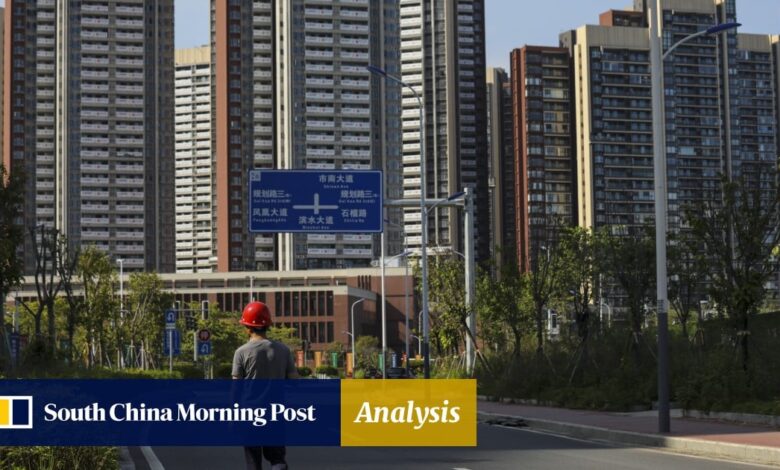China property: Guangzhou issues housing vouchers to those displaced by renewal efforts in move that could spur demand

Guangzhou has become China’s first tier-1 city to introduce housing vouchers to compensate residents displaced under urban-renewal efforts, a move that analysts say will boost local housing demand and ease pressure on municipal government expenditures.
The southern port city will begin issuing housing vouchers to “channel additional funding into urban renovation projects and … improve [the projects’] overall efficiency”, the Guangzhou Municipal Planning and Natural Resources Bureau said last week, outlining the city’s urban-redevelopment plan up to 2035.
Housing vouchers are a combination of monetary compensation and housing subsidies that local governments hand out to residents of run-down properties subject to demolition for redevelopment. Residents can use the vouchers to purchase new homes and enjoy varying degrees of tax benefits, depending on their relocation choices.
“Housing vouchers will help to ease the pressure on local government expenditures, as they tap an existing inventory of commercial housing instead of government-funded replacement housing,” Wang Xingping, a senior analyst at ratings agency Fitch Bohua, said in a note to clients. “This could spur demand for housing and help revive the local property market.”
Any nationwide impact on housing demand and prices will be muted, Wang said, as the stimulus measure this time targets shantytown residents in one large, first-tier city. When such measures first came out in 2014, they supported households in third and fourth-tier cities, where most renewal projects take place.
“Shantytown residents in higher-tier cities usually have decent financial and living conditions and are not in desperate need to upgrade their homes,” she said, adding that housing vouchers serve as an option for displaced households to buy new homes rather than as an obligation.
Housing vouchers came to dominate resettlement compensation in 2015, replacing direct compensation in the form of new homes funded by local governments.
HSBC profit misses estimates on hedging charges, higher bad-loan provisions
HSBC profit misses estimates on hedging charges, higher bad-loan provisions
Between 2014 and 2017, monetary compensation grew to account for more than 50 per cent of all redevelopment compensation. This drove the sale of around 3.7 million apartments in 2017, up from just 0.4 million in 2014, according to a Fitch Ratings report from August 2018.
Most funds for housing vouchers came from policy lenders like the China Development Bank, whose loans were in turn funded by the People’s Bank of China, the country’s central bank, under a special facility known as pledged supplemental lending.
The issuance of housing vouchers halted in 2018 as local governments sought to cool the housing market. It resumed in the second and third quarters of 2022 amid slumping home sales that followed the sector-wide crackdown that began in 2020.
Hong Kong retirees look to buy homes in bay area amid cheap yuan, home loans
Hong Kong retirees look to buy homes in bay area amid cheap yuan, home loans
Unlike in the previous round, the new vouchers have been funded mainly by local governments, who were faced with increasing liquidity problems amid China’s property downturn, Zhou Junzhi, chief macro analyst at Shanghai-based Minsheng Securities, wrote in a June report.
Since 2022, some 20 cities across the country, including Zhengzhou, Nanjing, and Xiamen, have rolled out voucher programmes to boost housing demand and reduce the number of unsold homes, according to data compiled by the China Index Academy, a real estate database.
“[Housing vouchers are] only one of the many measures that can help speed up the property market recovery,” David Lai, co-chief investment officer at Premia Partners, a Hong Kong-based asset-management firm, said in a note. “Different cities will have to consider their own circumstances in implementing any new measures, so we don’t see it is a must for other first-tier cities to follow.”





